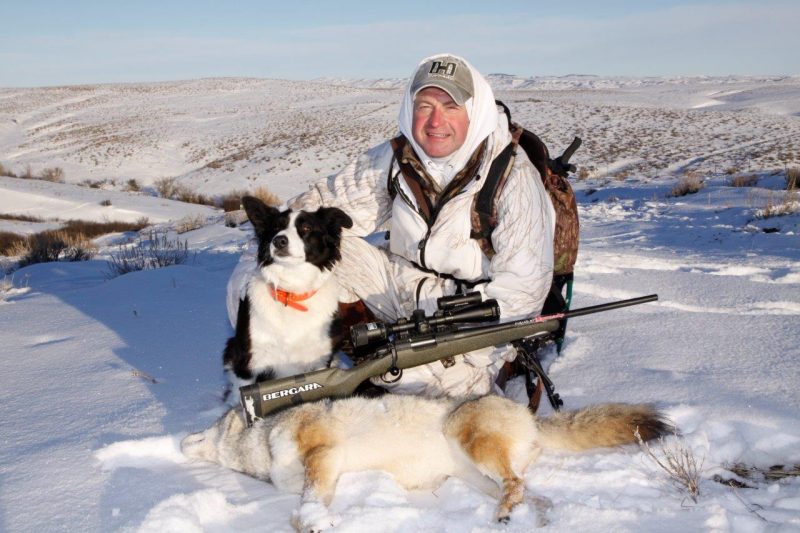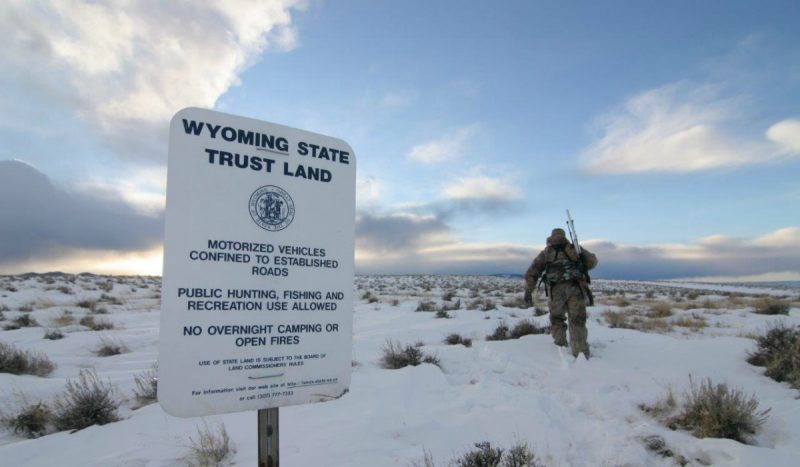Kayser on Coyotes: Public-Land Pointers for Success
Mark Kayser 01.16.18

You might get a couple landowners to open up and give you access for predators, but plan on doing the bulk of your hunting on public land unless Powerball was good to you. Competing for predator success on public land requires a crafty mindset. You’re not only attempting to outwit a fur-coat candidate, but you also must outmaneuver other hunters.
Even in the vast oceans of western public lands, you have to be on your game. Any parcel with easy access sees as much activity as an onramp to L.A.’s 405 freeway. To add another pelt or two to your winter take, consider implementing a few of these strategies on a future hunt.
Travel Farther
Adding another hour to your drive toward more rural settings leaves many unmotivated individuals bumping into each other on public lands near suburbia. By driving farther, it equals less hunting competition and possibly hunting uneducated predators.
Take the travel-farther philosophy one step further by hiking more once you arrive on site. Predators, especially coyotes, soon realize that standing by a busy byway in daylight leads to drive-by shootings. By the time the sun comes up, most predators have slipped away from roads to thick or rugged terrain a safe distance from humans. Hike a mile from any trail and you’ll land where the predators hole up during busy daylight hours.
My son and I hiked above a ranch recently and the deep snow begged me to quit. Nevertheless, I felt putting nearly a mile between us and the road would give the coyotes more confidence in showing during midday. Thirty minutes into the set and my hunch was right.

Look for Small Parcels
Large public parcels attract lots of attention. “Bigger is better” equals more hunting ground and possibly more predators hiding within. That may be true, but those big parcels could be congested and overhunted because others have that same idea.
Take a closer look at small parcels whether you live East or West. The thing to remember about predators is that you can call them off nearby land. Unlike other species that stay put on a piece of ground, the larger home territory of predators means roaming isn’t against the rules.
On a recent coyote hunt, I found a narrow sliver of Bureau of Land Management (BLM) ground that wasn’t large enough to keep a porcupine happy. By chance, it paralleled a large basin owned by a private ranch. I eased up to a connecting canyon with 200 yards of shooting gallery for me to watch on the public side. Forty minutes later, I tipped over a big male coyote called from the private side of the fence, but squarely on public when I pressed the trigger.
Ambush Ready
Whether pursuing deer, geese or coyotes, you need to set up where the critters want to be when you’re hunting. As you hike farther, as suggested in the opening strategy, go to a likely predator ambush site. Use popular hunting apps such as ScoutLook Weather to view hunting ground with Google Earth help, and mark successful sites to plan for future hunts.
To pinpoint these sites, you need to think like a predator. From your past experiences, discussions with other predator hunters, as well as hunches, mull where predators may bed, hunt and travel. Add a time schedule when predators are likely present, and you’ve laid the groundwork to a successful ambush.
A hunting partner of mine turned me on to this concept decades ago. One morning I wanted to start the first set on a creek-bottom. He politely said we could, but why not circle around to the high hills above the creek. He knew from experience that the coyotes were headed upward at daybreak to escape the ranch bustle about to begin. He was right, and we shot a coyote on our very first stand. It’s a concept I embrace to this day: be where the predators want to be.
Be the Black Sheep
We all want to be trendy, but when it comes to calling predators on public land, be the black sheep of the family. Whatever the current trend is, don’t follow it. If everyone is using coyote vocalizations, then switch to a rodent squeaker. If squealing piglets are trending hot, then ignore it and use crow calls instead.
With the tremendous pressure predators feel today, it only takes a few weeks of winter before most have heard the latest sounds by you and your buddies. Reading articles like this, surfing forums and morning convenience store conversations all spread cutting-edge strategies that the local crowd is using.
Think outside of that box if the trending sound isn’t igniting any predator fires. Calling less, staying longer, using sounds found outside your zip code, hunting at night, and even mixing calls for an Emmy-winning performance need to be on the table. Don’t be afraid to change sounds in the middle of a setup, either.
Recently I was calling coyotes and started with a distressed whitetail fawn as my main sound. There was no immediate response, so I swapped that out for a higher-pitched pronghorn bawl and added in some fighting canine sounds. Five minutes later, a coyote rolled in to go for a ride in my truck.
Public land is a blessing because it gives you a place to hunt. To keep those blessings coming, be as crafty as your quarry.


